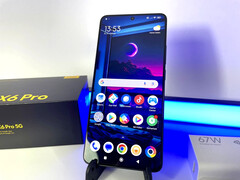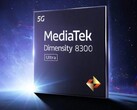The largest difference between the two midrange smartphones concerns the processor. While with the Snapdragon 7s Gen 2, the Poco X6 uses an SoC that is typical for its price class, the Poco X6 Pro uses the much faster MediaTek Dimensity 8300-Ultra.
High-end performance with the MediaTek Dimensity 8300-Ultra
In our test, the octa-core processor is fast enough to keep up easily with other high-end processors. For example, the result of 1,465,265 points in AnTuTu v10 would have ensured a place among the fastest smartphones for the Poco X6 Pro last year. Even according to the criteria of 2024, the Xiaomi remains a very fast smartphone that leaves other midrange competitors far behind in the dust, in terms of performance.
Smaller differences in the rest of the equipment
The triple-camera system with a 64-MP resolution and the fast, 120 Hz AMOLED panel are almost identical in both devices. However, the display of the Poco X6 is protected by Gorilla Glas Victus, while the Poco X6 Pro only uses the previous generation with Gorilla Glas 5. You can also only find the 3.5-mm headset port in the smaller model.
On the other hand, the Poco X6 Pro offers more in terms of the communication equipment. With the MediaTek Dimensity 8300-Ultra, the smartphone also supports Bluetooth 5.4 in addition to WiFi 6 (Poco X6: WiFi 5 and Bluetooth 5.2). For the Pro model, Xiaomi also uses the more current operating system called HyperOS, which is based on Android 14, while the Poco X6 still continues to use the old MIUI user interface that is based on Android 13.
You can find the full review and test of the Xiaomi Poco X6 Pro here.




























